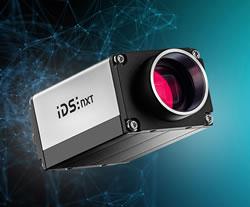Sinclair College Launches First Academic UAS Journal
The Journal of Unmanned Aerial Systems, the first academic publication to focus on UAS, is hosted online at www.uasjournal.org. The Journal publishes peer-reviewed articles along with technical industry papers, making a blended publication that serves as a public forum for sharing new concepts, identifying solutions, and recognizing key strategic thinkers that are addressing the difficult issues facing the UAS industry today as well as in the future.
FOR IMMEDIATE RELEASE
Sinclair Community College Workforce Development
Ryan.honeyman@sinclair.edu - 937.512.5743
Sinclair Launches First Academic Publication Focusing on UAS
Dayton, OH - Sinclair Colleges National UAS Training and Certification Center is pleased to announce the sponsorship and launch of a new academic journal tailored specifically to the industry of unmanned aerial systems (UAS).
The Journal of Unmanned Aerial Systems, the first academic publication to focus on UAS, is hosted online at www.uasjournal.org. The Journal publishes peer-reviewed articles along with technical industry papers, making a blended publication that serves as a public forum for sharing new concepts, identifying solutions, and recognizing key strategic thinkers that are addressing the difficult issues facing the UAS industry today as well as in the future.
"This new Journal brings together a significant number of top-tier organizations and talented individuals to create a timely and focused publication for presenting new UAS research and best practices in an accessible format," said Deb Norris, Vice President of Workforce Development and Corporate Services. "As a nationally established provider of UAS training and education, Sinclair has drawn on its network of professionals to convene Journal board members and reviewers from across industry, government and academia."
The Journal accepts submissions of peer-reviewed articles, technical papers, abstracts, book reviews and other content, all of which will be available for free public access online. The Publishing Board anticipates that the Journal will typically be issued twice each year with UAS content including topics relating to the air vehicles, ground control stations, communications, navigation, human performance, sensors, legislation, training, operations, data exploitation and other relevant subject matter.
Multiple organizations are involved in assisting with the effort, including a selection of Journal Publishing and Editorial Board members and Reviewers from industry, government and academic institutions. More than 30 faculty and staff are represented from organizations including Embry-Riddle Aeronautical University, University of North Dakota, University of Florida, Air Force Research Laboratory, Air Force Institute of Technology, University of Florida, University of Dayton, The Ohio State University, Wright State University, Ohio University, Northwestern Michigan University, U.S. Geological Survey, U.S. Army Corps of Engineers, Michigan Tech Research Institute, Walden University, Altavian, Woolpert, CAMO, Riverside Research, and The Perduco Group.
"We are thankful to all of the volunteers serving in Board and Reviewer roles that have made the Journal a reality" said Dr. Andrew Shepherd, Director for UAS at Sinclair and the Journals Managing Editor. "Their professionalism, commitment to quality, and continued support has made this launch and the future success of the Journal possible."
Sinclair College is recognized as a national leader in UAS, supported by world-class partnerships, cutting-edge technology, and custom training programs designed to drive the expansion of the UAS industry. Sinclairs curriculum focuses on real-world applications of emerging UAS and sensor technologies through classroom and online instruction, simulation and hands-on vehicle operations.
###
Featured Product

3D Vision: Ensenso B now also available as a mono version!
This compact 3D camera series combines a very short working distance, a large field of view and a high depth of field - perfect for bin picking applications. With its ability to capture multiple objects over a large area, it can help robots empty containers more efficiently. Now available from IDS Imaging Development Systems. In the color version of the Ensenso B, the stereo system is equipped with two RGB image sensors. This saves additional sensors and reduces installation space and hardware costs. Now, you can also choose your model to be equipped with two 5 MP mono sensors, achieving impressively high spatial precision. With enhanced sharpness and accuracy, you can tackle applications where absolute precision is essential. The great strength of the Ensenso B lies in the very precise detection of objects at close range. It offers a wide field of view and an impressively high depth of field. This means that the area in which an object is in focus is unusually large. At a distance of 30 centimetres between the camera and the object, the Z-accuracy is approx. 0.1 millimetres. The maximum working distance is 2 meters. This 3D camera series complies with protection class IP65/67 and is ideal for use in industrial environments.
